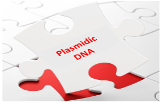Canvax Biotech
 |
||
Canvax is a leading manufacturer and supplier of the most innovative solutions, kits and R&D Reagents inside Molecular Biology fields. Since its foundation in 2001, Canvax offers reliable, cost-effective and easy-to-use innovative tools for research. Based in Córdoba (Spain), since its beginning it has focused on R&D of multiplex high throughput platforms (HTS) for Drug discovery and Diagnostic applied biosensors. Over a decade later, Canvax is a worldwide leading expert in GPCR expression in heterologous cells, with important patents and exclusive know-how. Canvax prides itself to be the first company to get an unprecedented milestone that could revolutionize the Diagnostics sector: Canvax established stable high-level expression of odour GPCRs into heterologous cell lines in 2014. This key milestone, that could be applied in diagnostic, perfume and cosmetic industry, are being employed to obtain a molecular nose, a sensitive and non-invasive diagnostic molecular device for early detection of cancer, as the nose of trained dogs do. Thanks to this project, Canvax was awarded, in 2013, with the largest Public & Private Contract for Pre competitive Technology Development in Spanish history. Website : www.lifescience.canvaxbiotech.com | ||

Extraction and purification of plasmidic DNA
A plasmid is a circular double-stranded DNA molecule. The plasmid is independent of chromosomal DNA and is capable of autonomous replication that is not essential for the survival of the cell. This replication takes place from the origin of replication of the plasmid. Plasmids occur naturally in prokaryotes (bacteria) and eukaryotes (yeast) but are also artificially modified for use as a tool in molecular biology. Different plasmids can co-exist in a cell (provided they are mutually compatible).
In nature, plasmids are pieces of DNA that can be transmitted by horizontal transfer from cell to cell. If it carries a gene of interest (e.g. resistance to an antibiotic), this is a definite advantage for the cells that possess it.
Researchers use plasmids to insert a DNA fragment of interest into the cell, thanks to cloning cassettes. This allows them to clone genes to express proteins or RNA and analyse them.



